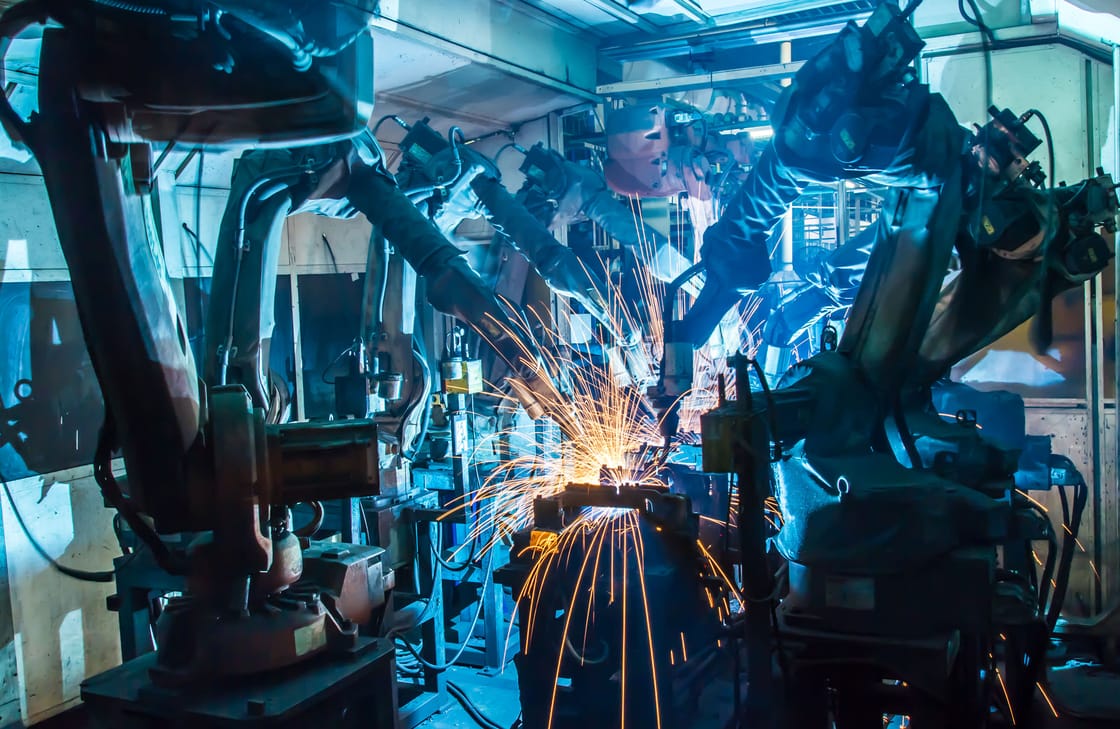Logistics in Industry 4.0: Fully networked
Digitization is transforming the German industrial landscape. In the smart factory, everyone will be networked with everyone else in the future. But this cannot work without an optimal logistics system. However, the companies still only have partial areas in view.
It sounds like the future: In the intelligent factory, workpieces find their way through the production facilities completely independently and tell the machines what should happen to them at which station. Robots assemble the products – humans program, monitor and thus ensure a smooth process. The networked cooperation does not have to be limited to the individual factory: The supplier and partner companies are also included in the production circle. This helps to improve processes and save costs on all sides.
Fourth industrial revolution
The scenario described is explosive. Because behind the buzzword “Industry 4.0″ lies nothing less than the Fourth Industrial Revolution. After the invention of the steam engine, the widespread supply of electricity and later computers and IT, now comes the all-encompassing networking in the Internet of Things. All of a company’s processes are interconnected thanks to intelligent hardware and software solutions.
However, this cannot work without an optimal logistics system. This is because the central promises of digitization – for example, complete transparency, production in small batch sizes with a high number of variants, networked processes or decentralized control – cannot be realized in production alone. To implement them along the entire supply chain, a completely new understanding of logistics is needed – from procurement to warehousing and production to distribution logistics. Logistics 4.0” is at the heart of digitization.
Horizontally and vertically networked
In “Logistics 4.0”, the supply chain must be networked in two dimensions: both vertically from the supplier to the customer and horizontally in the form of collaborative value creation networks. The goal of this all-encompassing dovetailing: companies can thus implement self-controlling processes while simultaneously increasing their degree of automation and transparency.
New and further developed technologies already make this two-dimensional networking possible today. In addition to constantly improved sensor technology, this includes above all the automated, wireless exchange of information from machine to machine (M2M) and advances in robotics. In the future, augmented reality, in which computers and robots support and enhance human perception, will also play a role. At the same time, data is always and above all everywhere available within the framework of cloud computing and can be analyzed and processed quickly and precisely with the help of Big Data applications.
Already a reality today
Even if the universally networked factory still sounds like science fiction today, many of its components are already a reality and have long been used by companies in Germany and the rest of the world: For example, transport management systems create complete transparency and make it possible to systematically control deliveries from OEMs and suppliers. Driverless tugger trains navigate with the help of a 3-D laser and modern video technology. In supermarkets, shelves and storage bins measure the stock levels of goods themselves thanks to sensor technology and reorder products that are running low. So-called smart glasses replace scanners or even paper documents in warehouse picking – reducing errors and increasing process speed.
“However, these and many other examples have in common that today only partial areas of the supply chain are digitalized and networked with each other according to “Industry 4.0″ aspects,” warn the experts of the logistics consultant 4flow. “There is still a long way to go before we have complete networking along the entire value chain.” In addition, existing solutions rely primarily on new technologies, but “Logistics 4.0” calls for a cross-process approach. And that usually requires organizational realignment. For example, “Industrie 4.0” solutions will change or even replace traditional business models in some companies. Also, new disruptive technologies such as 3D printing will have a dramatic impact on spare parts logistics. At the same time, however, innovative companies can always design and offer new services.
This might also interest you:
